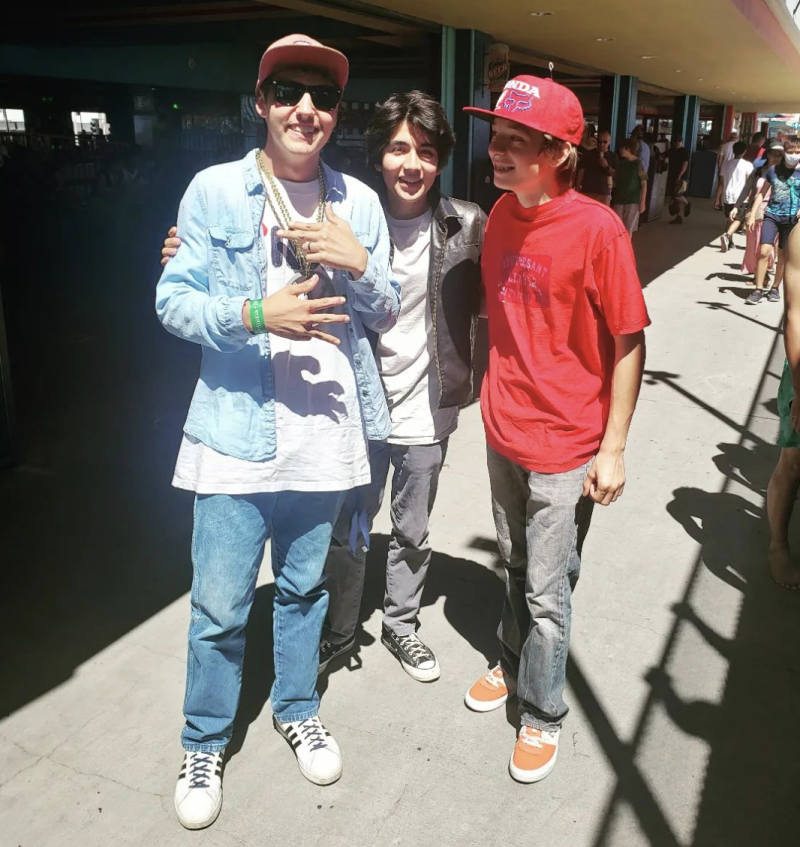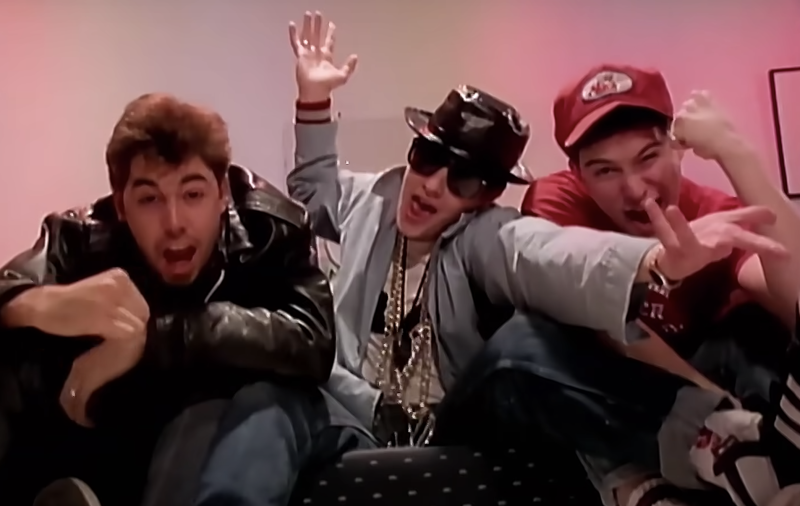This week, as we near the end of 2022, the writers and editors of KQED Arts & Culture are reflecting on One Beautiful Thing from the year. Here, among a year that saw our tactile relationship to music further deteriorating, writer Rae Alexandra finds joy in a chance encounter affirming that certain icons haven’t been forgotten.
 In August, I was strolling the packed Santa Cruz Beach Boardwalk with a friend when a trio of teens suddenly caught my eye. Casually walking in the opposite direction, the boys, complete strangers to me, were instantly recognizable.
In August, I was strolling the packed Santa Cruz Beach Boardwalk with a friend when a trio of teens suddenly caught my eye. Casually walking in the opposite direction, the boys, complete strangers to me, were instantly recognizable.
One kid wore a red baseball cap and red shirt with the word “Stuyvesant” on it. The second had scruffy black hair and (despite the very hot weather) sported a black leather jacket over a white T-shirt. The third kid had on blue double denim paired with a FILA logo shirt, a baseball cap, and a VW chain hanging around his neck. The words leapt out of my mouth before I’d had a chance to even think about them. “It’s the Beastie Boys!” I yelled across the boardwalk.
All three boys heard me and immediately erupted into the kind of undiluted glee that only comes when someone finally recognizes your brilliance for the first time. Once they’d calmed down a bit, I asked if I could take their photo for posterity. The trio happily obliged, then went on their way, excitedly chatting about what had just happened.

I didn’t ask these goofy, incredibly cool kids their names. I didn’t ask them any questions. We simply shared a moment of mutual respect. I respected them for their musical knowledge and attention to detail; they respected that I recognized their point of reference. I suspect our brief exchange was far more important to me, however, than it was to them.


